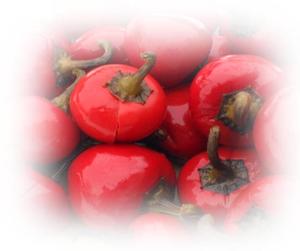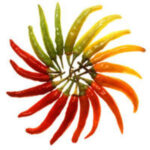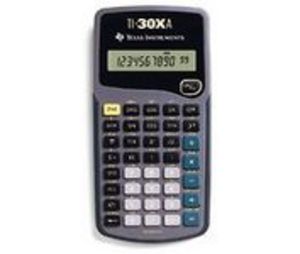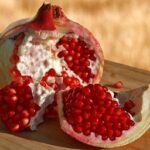Many of us love to add hot peppers to our recipes. But how many times have we added too much or learned the hard way that a particular pepper was simply too hot?
There are few solutions other than to dilute your perfectly crafted dish or start over. If this has ever happened to you, there is a better solution. However, it will require a calculator and a bit of food-science.
To begin with, you need to understand the variety of pepper you are using and its Scoville rating. The Scoville scale identifies the approximate heat of a pepper as measured in Scoville units. Here’s a quick recap of many popular peppers and their Scoville ratings:
- Sweet Bell Pepper 0
- Sweet Banana 0
- Cherry Pepper 100 – 500
- Pepperoncini 100 – 500
- Anaheim 500 – 1,000
- Poblano 1,000 – 2,000
- Ancho 1,000 – 2,000
- Pasilla 1,000 – 2,500
- Jalapeno 2,500 – 5,000
- Guajillo 2,500 – 5,000
- Chipotle 5,000 – 8,000
- Hot Wax 5,000 – 10,000
- Serrano 5,000 – 25,000
- De Arbol 15,000 – 30,000
- Tabasco 30,000 – 50,000
- Cayenne 30,000 – 50,000
- Santaka 45,000 – 60,000
- Chiltecpin 60,000 – 85,000
- Thai 50,000 – 100,000
- Bahamian 95,000 – 110,000
- Jamaican Hot 100,000 – 200,000
- Habanero 100,000 – 325,000
- Scotch Bonnet Habanero 150,000 – 325,000
- Red Savina Habanero 300,000 – 570,000
- Ghost Pepper 1,000,000 to 1,300,000
- Pure Capsaicin 15,000,000 – 16,000,000
What you’re about to do is give your recipe an overall Scoville rating. This is based on the assumption that you are using one level teaspoon of mashed pepper and one quart of all other ingredients. It’s important that you mash the pepper with a spoon on a cutting board or in a food processor. Diced chunks tend to concentrate the heat in varying levels from one bite to the next. If you like to see chunks of peppers in your recipe, use some of the peppers with lower Scoville ratings and use the higher ratings to mash and add some bite to your meal. You can use the following mathematical formula to determine the Scoville rating of your recipe. Here’s the magic formula and the translation assuming you are spicing one quart of ingredients.
1(sr) ÷ 192 = RSR
1 = One level teaspoon of a specific pepper
sr = Scoville rating
192 = number of teaspoons in a quart
RSR = Recipe Scoville Rating
For example. If you add one level teaspoon of mashed Jalapeno peppers with a Scoville rating of 3,000 to one quart of chili your equation looks like this:
1 x 3,000 ÷ 192 = 15.625 RSR
In other words, you have a Scoville rating for your chili of about 15 and a half. If you want to raise the Scoville rating you can either increase the proportion of mashed Jalapenos a teaspoon at a time or use a pepper with a higher Scoville rating.
For instance, 2 level teaspoons of mashed Jalapeno would result in:
2 x 3,000 ÷ 192 = 31.25 RSR
Assuming one quart of recipe ingredients, use the Scoville ratings and the equation to produce the relative heat you like. You can always vary the amount of peppers to equal the desired heat for a certain RSR. You may have to if you only have one variety of fresh pepper available to you. You can also mix and match peppers and for the first time actually compute the heat level that will result. Just make sure you track the Scoville ratings and number of teaspoons and add them to your equation. If you are making more than one quart just remember that there are 48 teaspoons in a cup and four cups in a quart giving you 192 teaspoons. Multiply the proportionate amount of peppers and Scoville rating assuming 48 teaspoons to each cup to adjust the equation. Here are some examples for varying sizes of liquid measures:
1 cup: (The Scoville rating of one level tsp. mashed pepper) ÷ 48 = RSR
1 quart: (The SR of one level tsp. mashed pepper) ÷ 192 = RSR
2 quarts: (SR of one tsp. masked pepper) ÷ 384 = RSR
1 gallon: (SR of one tsp. masked pepper) ÷ 768 = RSR
It’s wise to add some of the liquid from your recipe to a cup and mix the mashed pepper to make a slurry. Add this to the recipe, stir well and simmer a bit and taste. Taste as you go and add more if you like, but always record the pepper’s Scoville rating; the equation and the number of teaspoons of mashed pepper. In no time you’ll have recipes with the perfect proportions written down to suit you and your family’s tastes every time.







